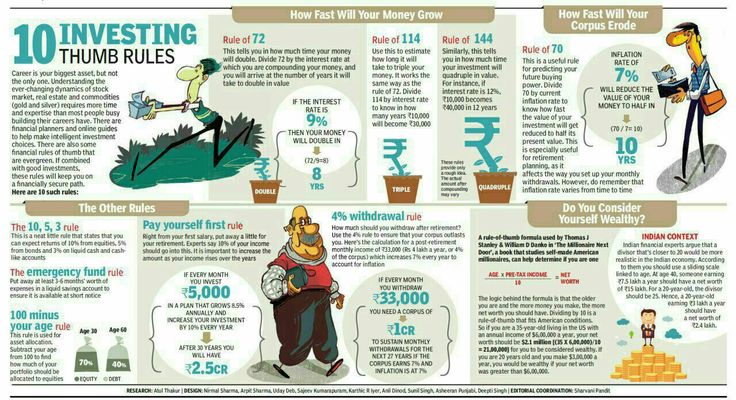When you purchase through links on our site, we may earn a commission at no additional cost to you. Learn More
When you’re in the market for a second-hand ATV, doing your due diligence is crucial to ensure you make a good deal. One of the factors you need to consider is how many hours the ATV has run. But be aware that the hour count alone does not paint the complete picture of the vehicle’s condition.
A well-maintained and well-treated ATV from a quality brand can last 1000 hours or more. After the 1000-hour mark, there may be a need for some more significant repairs or more extensive maintenance. However, an abused or neglected ATV may last only a few hundred hours before it breaks down.
There is no one answer fits all to exactly how many hours an ATV will last, as this largely depends on how well the bike is taken care of, how it is ridden, and more. The lifespan may range from just a few hundred hours to 5000 hours or, in some cases, even more.
We’ll get more into the various factors determining an ATVs life expectancy later in this post. But to give you a general idea of what to expect, here are some guidelines on how long the bike will last in the different scenarios, ranging from one extreme to the other:

Related: ATV Hours vs. Miles Explained – Hours to Miles Conversion
Don’t we all know someone who somehow manages to break almost everything they get their hands on?
It doesn’t matter whether it is tools, camping gear, sports equipment, or a vehicle. After just a short while in their possession, the item starts to show clear signs of deterioration until it eventually breaks completely, long before the typical life expectancy.
This type of person typically doesn’t put too much thought into things like build quality or brand reputation when purchasing an ATV. They don’t enjoy or don’t take pride in taking good care of the things they own, or they use it way beyond what it was designed to handle.
If you fit in this category, even the highest quality ATV won’t last more than just a few hundred hours of use before it will need significant repairs or possibly a complete restoration. I’ve seen ATVs with 200 hours on the counter in a state where it makes more sense to buy a new bike rather than spending the time and money required to repair the old one.
This is the category where you’ll find most ATV owners, myself included.
These people typically use their ATVs for weekend trail-riding, hunting, or everyday work around the farm. They maintain the specified service schedule, at least for the most part, and clean the bike when it gets too dirty. They generally use the ATV like it’s supposed to be used, without taking it to the extreme.
If you fit this category, your ATV will likely last 1000 to 2000 hours before significant repairs or more extensive maintenance is required.
ATVs with this amount of hours on them typically end up getting sold to someone with the time and skill required to keep the bike going further, or it ends up being sold for parts or sent to the scrapyard.
At the far end of the scale, you have those who genuinely enjoy and take pride in keeping their gear in top shape.
These are the people who change the oil in between scheduled services just in case, never put away their ATV without cleaning it properly, and ride responsibly without pushing the bike too hard.
When things break or wear, they put in the time and effort required to get the most out of the bike rather than swapping it for a new one.
ATVs owned by people in this category are the ones that tend to last the longest. Don’t be surprised if their ATV with 1000 or even 2000 hours on the clock still looks and runs like new. Or their 25-year-old thumper with 5000 hours of runtime is still going strong.
These are the factors that matter the most regarding how long you can expect an ATV to last.
Maintenance is critical when it comes to the life expectancy of ATVs. Failing to keep up with the scheduled service intervals will drastically reduce the number of hours you get out of the bike.
ATVs have a relatively high power-to-weight ratio compared to a car or most other on-road vehicles. Small, high-output engines are typically more service-intensive than heavier engines with less power.
In addition, ATVs are often used in more challenging conditions such as rough and muddy terrain, with a lot of acceleration and braking, pulling cargo, or turning large, heavy mud wheels. These riding applications put a lot of strain and wear on the engine, drivetrain, suspension, and steering components, consequently making regular service and upkeep critical to ensure long service life.
Proper maintenance should include regular cleaning and re-greasing. Proper cleaning is essential after riding in the mud and before long-term storage.
Mud left sitting contains moisture that speeds up corrosion and may negatively impact plastic and rubber materials. Bushings and bearings need to be greased regularly to expel moisture that would otherwise cause corrosion, premature wear, and eventually component failure.
Related: 15 tips to prevent rust from developing on your ATV
Some ATVs live a comfortable life putting around the farm, doing light trail riding, or carrying a hunter out to his hunting cabin. These riding applications put a lot less strain on the bike and are considered “light hours.”
These riding applications put a lot less strain on the bike and are considered “light hours.”
Other ATVs are regularly put through challenges such as deep mudding, racing, rock climbing, or pulling heavy cargo in extreme conditions. On the other hand, these riding applications put a lot more strain on the bike and are considered “hard hours.”
An ATV that spends most of its days doing light hours will likely last much longer than one that does mostly hard hours. in the former category of riding
Most manufacturers keep spare parts in stock for about 15 years. After that point, getting spare parts becomes increasingly tricky as parts run out of stock.
After a while, you get to a point where the hassle of scavenging for parts becomes too tedious to be worth it.
An ATV is best stored in a dry, dark, and well-ventilated area, protected from the elements, moisture, and critters.

Related: Can You Keep an ATV Outside? What You Ought to Know
Many ATV owners modify their bikes for increased ground clearance, more power, or better performance in the mud.
A stock ATV is carefully designed and manufactured with an optimal balance between its components.
Any modification that increases performance strains other components such as the engine, transmission, drivetrain, bearings, bushings, and CV-axles. Most of these parts can be upgraded or tweaked to keep up with other performance-enhancing modifications.
As soon as you change one component, the ball begins rolling, and things may quickly become very expensive. What often happens is that people choose the upgrades that increase performance the most such as lift kits and bigger tires, but skip out on the ones required to maintain reliability.
And regardless of your efforts, you will rarely achieve the same reliability and longevity in a modified ATV as in one that’s kept stock.
Related: 26 Essential ATV mudding mods
The average ATV rider goes for recreational trail-riding every other weekend, does some light work around the farm, uses their ATV to get to their remote cabin, or plows their driveway in the winter.
This typically adds up to about 50 to 100 hours of run time each year on average.
Some use their ATV in their daily activities and may put on significantly more hours, while others barely run their bike.
A well-maintained ATV with 500 hours on the counter still has a bit of runtime left. An ATV that is run for more than 100 hours each year on average or more than 1000 hours throughout its lifetime is often considered high because it may soon need more extensive maintenance.
However, the hour count alone does not make for a precise indicator of the bike’s overall condition.
Hours of runtime should be one of the many factors you consider when in the market for a second-hand ATV. Other factors that are just as, if not more important, include:

Here are 20 questions you can ask the seller that will give you a much better idea of whether the bike you’re considering makes a good deal or not.
200 hours is generally not considered a lot for an ATV as long as it’s properly maintained, has not been involved in any accidents, and is in overall good condition. However, 200 hours in just one year is on the higher end of the scale.
An ATV with 400 hours on the counter will likely begin to see some signs of wear and may need to have wearable parts such as brakes, wheel bearings, and axle joints replaced. However, if it’s followed up on maintenance and hasn’t been abused, it should still have quite a bit of life left.
An ATV engine should last the vehicle’s lifetime, which is typically 15 to 20 years or more. This applies as long as the specified maintenance schedule is fulfilled, the engine is kept stock, and not abused (improper break-in procedure used, regularly overheating, high revs when cold, etc. ).
).
Related: How Long Do ATV Tires Last? When Should They Be Replaced?
Understanding high mileage and high hours on ATVs and UTVs is crucial to buying or selling a used vehicle. There isn’t an easy answer, so read this post to prepare yourself for a great purchase.
Like cars, ATVs that have been driven more miles have seen more action and have less life left in them, but ATVs and UTVs differ from cars in that you need to know the hours as well as mileage.
The ratio of miles to hours can indicate how the previous owner rode their vehicle, so you need to notice both numbers and compare them. If the ATV has high mileage but a small number of hours, they probably rode very fast and maybe recklessly. You would need to ask them about that. If the ATV has low mileage and many hours, this ATV was probably used for hauling or in tough terrain where their speed had to remain low. How bad that is depends on well the vehicle was maintained.
How bad that is depends on well the vehicle was maintained.
15 miles to 1 hours is the ideal hours to miles ratio on ATVs.
Truthfully, the most important thing you need to know is how the ATV or UTV was ridden and how it was cared for.
ATVs are intended to last 10 years or 10,000 miles. If they’re well cared for, they might last longer.
How long an ATV actually lasts varies greatly depending on the quality of the vehicle, the way it was ridden, and how it was maintained.
Some are useless after 100 hours, because they were a cheap brand and/or the owner abused or neglected the vehicle. Some can withstand harsh, truly harsh environments.
For hardcore riding, don't forget about your own safety and comfort. Opt for specialized ATV/UTV breathable waders. Multi-layer membrane fabric, extra reinforcement in high-stress areas and dirt-repellent coating are a perfect combo for off-road hazards.
If you’re buying a used ATV, look for brand names you recognize and know are respected. This won’t answer all of your questions because someone can still run a great vehicle into the ground, but it is a crucial indicator of the original quality and expected life span of the vehicle.
This won’t answer all of your questions because someone can still run a great vehicle into the ground, but it is a crucial indicator of the original quality and expected life span of the vehicle.
Off-road will keep you dry and safe in water and mud
Find out the best look for you
This is the most important factor in the life of an ATV or UTV.
Previous owners have to have kept up with recommended service intervals, cleaned the ATV after every ride or weekend of riding, and made all necessary repairs.
Light trail riding, light to moderate farm use, and hunting, camping, or fishing trips fall in the light hours category. This puts little strain on the vehicle, so it will last a longer period of time.
Deep mudding, water use, higher than average speeds, rock climbing, and extreme hauling are hard hours that wear a vehicle out fast. It’s great fun while you’re doing it, but no one should expect these machines to last their full lifespan or to get top prices when they try to sell them.
Proper or improper storage impacts the life of the vehicle. It needs to have been stored indoors and protected from light, pests, and moisture. The area should also have been well-ventilated.
When storing the ATV, the owner should also have been mindful of fluids, tire pressure, and battery tending.
As cool as modifications are, they put a strain on the machine and decrease its lifespan. Take this into consideration when determining the price of a used ATV or deciding whether to purchase it. You should also make sure any modifications were installed correctly.
Thinking strictly of ATV mileage range and hours, 500 or fewer hours is ideal. 5,000 and up is considered high miles for ATVs and UTVs.
But don’t just go for the vehicle with the fewest miles. Consider the age of the vehicle. If someone has owned an ATV and clearly rarely ridden it, it’s unlikely that it’s in great shape after spending that much time in storage. Alternatively, it could tip you off that they’re lying.
Alternatively, it could tip you off that they’re lying.
Follow this plan.
First, ask the owner to make sure not to have the engine running when you arrive and/or notice whether it’s running when you arrive. This is a common tactic to hide that an engine doesn’t want to start.
Next, ask the owner questions about their use of the vehicle, maintenance done on the vehicle, and storage. Consider whether they seem trustworthy.
Ask to inspect the ATV or UTV, and test drive the vehicle.
No reputable seller should mind you taking any of these steps.
Once you know the hours, mileage, and the way the machine’s been cared for, think of the price. If you have the money and the ATV with fewer miles and hours seems like it’s been well cared for, go ahead and pay what seems reasonable. But don’t necessarily rule out buying a high mileage four-wheeler or one that’s done a lot of hours. A properly cared for quality brand of ATV might still be a worthwhile purchase, if it fits those criteria and you don’t spend much on it.
Consider how much is being asked and compare your budget and the likelihood of repairs or replacing it. You can get the best possible deal on a machine needs that some love by buying a salvage ATV. You can expect to probably need to invest in repairs and replacement in the future, but you won’t spend much on it so you can better afford the maintenance and repairs.
Routinely grease the ATV or UTV to protect it from water, dirt, mud, and more.
Clean the ATV or UTV regularly. This means you wash all mud, dirt, and bug parts off of the frame, clean the radiator, and maintain the filters.
Stick to maintenance schedules like your oil and coolant changes.
Make sure you adhere to proper storage procedures.
ENDURO Camogrey
the most durable
279 EUR
AQUAMASTER Red
reliability & comfort
677 EUR
ALL SEASON Black
59 EUR
SPEEDMASTER NEW Graphite
209 EUR
Explore all
Chain Maintenance
A ATV chain on a chain drive is one of the most important elements that needs to be groomed and cherished and thoroughly cleaned. At the same time, you need to do this regularly, then your ATV will serve you much longer. Lubricate the chain only after you clean it, otherwise the grease mixed with dirt will interfere with the operation of the system.
At the same time, you need to do this regularly, then your ATV will serve you much longer. Lubricate the chain only after you clean it, otherwise the grease mixed with dirt will interfere with the operation of the system.
When it comes time to change the chain, change it along with the sprockets, because putting a new chain on the old sprockets will kill it very quickly. When changing the chain, pay attention to what kind of chain you need - they exist in two types - standard and o-shaped, and you cannot replace one with the other, so choose the one that fits your ATV, you can read about it in the user manual.
Cleaning the Carburetor
Kazuma ATVs require periodic cleaning of all important parts, and you can do some of this work yourself. A clean carburetor is the key to the proper operation of the entire ATV engine, so do not put it off indefinitely. First, unscrew all the fasteners that secure the carburetor and remove it from the ATV. Don't forget to collect all the screws and nuts so you can reattach the carburetor.
Using a wrench, unscrew the bottom of the carburettor. Use a WD-40 type cleaner to treat all holes, then blow them out with a pump. Now you just have to fix the carburetor in place and connect all the necessary wires and hoses to it.
To make sure everything went smoothly, start the ATV, if it doesn't start, pull the throttle and keep trying until the ATV starts.
Changing the oil
Changing the oil and oil filters is an important part of ATV maintenance. If you are going to change the oil filter, why not change the oil in the quad bike as well? This is not difficult to do and you can easily cope with this task yourself, without resorting to the help of a mechanic.
Do not forget, of course, that ATVs can differ in design and it is best to study the process of changing the oil in the instructions for your ATV. There you will also find out how often it is worth changing the oil and how many kilometers the ATV can travel between oil changes and cleaning the oil filter.
In order not to run later, prepare all the tools you need for the job.
Find a spot for your ATV where you can easily turn around. Not in the sense of an ATV, but just approach him from all sides. It is better to change the oil with warm oil, so start it up and let the ATV warm up first. Remove the plastic that hides the filter and the oil fill hole. Locate the oil drain hole at the bottom of the ATV and, using a pan, drain the used oil.
While the oil is being drained, you can remove the oil filter. Before installing a new oil filter, thoroughly clean all surfaces that touch it from dirt. Lubricate the new filter with oil and put it in place, it remains only to tighten all the nuts that hold the filter and tighten them well with a wrench.
When the oil is completely drained, close the drain plug and discard the used oil. According to the rules, it should be disposed of in a specially designated place. Now pour the right amount of oil into the ATV, for this it is better to use a funnel so as not to pour everything around. Check that oil does not leak from the filter and from the bottom of the drain hole.
Check that oil does not leak from the filter and from the bottom of the drain hole.
Start the ATV and let it idle for a while. Let the ATV cool down a bit and check the oil level, if you don't have an oil gauge on the dashboard you can use a dipstick. Some of the oil has already been distributed throughout the ATV system, so you will have to top up a little. It remains to fix in place all the shields that were removed in order to get the filter.
Clean the air filter
A clogged and dirty air filter does not allow air to enter the engine in the right amount and the ATV cannot burn fuel with the required efficiency. But moving on dusty and dirty roads on our ATV, we pollute the air filter especially quickly. Therefore, you need to clean it more often.
It is not difficult to do this and it is absolutely not necessary to go to the workshop for this every time. Read the manual and find the air filter in your ATV. Usually it is located under the driver's seat, but there are exceptions to the rule.
Clean the area around the filter and its plastic cover. Remove the filter cover and, unscrewing the central nut, remove the filter. Do this carefully so as not to break the filter. Rinse it in warm water - any soap will do, rinse it until the water looks clear.
Replace the plastic support and install the filter on it. Close the cover and fasten the screws.
As you can see, ATV maintenance is often not difficult, while following the rules of care will save the ATV, significantly extend its service life until the first overhaul and save you from breakdowns on the road.
02/12/2019
ATV maintenance is an important point that deserves special attention. But any technique is subject to such a process as wear and tear and repair is required over time. Any vehicle needs to be looked after, timely maintenance of key elements, replacement of consumables, worn out spare parts. It is important not only to do everything right, but also on time.
Each vehicle has a technical operating manual, service book. And they clearly and in detail describe what needs to be done and when. Reading such "documents" should not be neglected.
Most manufacturers recommend servicing your ATV after 2500 km or once a year or after 160 hours of operation. The list of obligatory maintenance works includes the following actions:
Electrical equipment
Check the operation of the bulbs. Visual inspection of electrical wiring for deformation, breakage or oxidation. If necessary, change the bulbs and replace the wires that have undergone deformation.
If necessary, change the bulbs and replace the wires that have undergone deformation.
The battery must also be removed and serviced. Using a load plug, check the voltage with and without load. Check electrolyte density. Add to it, if necessary, distilled water and put the battery on charge.
Brakes
If the thickness is less than 2 mm, then you need to replace them because the development of more than 70% and most likely you may not have enough reserve for the next season. And you will have to change the pads at the height of the quad season. Replacing the brake pads on most quad bikes is fairly easy with some skill and skill. This will require a set of tools a couple of hours of time and the pads themselves.
Oil change
Oil change thresholds in ATVs vary from 1000 km to 4000 km. Here, apparently, it depends on how one relates to their technique. Most manufacturers have a recommended mileage between replacements of 2000-2500 km. So it is written in the service books of CF Moto, BRP, Stels, Yamaha.
So it is written in the service books of CF Moto, BRP, Stels, Yamaha.
Changing the oil is easy. We unscrew the drain plug, putting in front of it some kind of container to collect the used oil. As soon as all the oil drains, we twist the drain plug, wind the new oil filter and fill in fresh oil. In the amount that is written in the service book. Usually it is no more than 3 liters.
In gearboxes, the following oil volume is rear 250 ml, front 150 ml.
It will also not be superfluous to change the coolant and brake fluid. Well, or at least add these fluids to the required level.
Syringed
To do this, you need a special lubricant for squirting (although some use lithol for this purpose) and a gun again made specifically for this. Usually the oiler on the quad is from 8 to 17.
Storage
ATVs are usually not used in winter. This means that it becomes necessary to properly carry out maintenance in order to prepare your vehicle for long-term storage. First, before storage, you need to remove the battery. It must be stored at room temperature. Do not leave it on a cold floor, stone or cement. Secondly, you need to protect the ATV itself from dust, dirt, and foreign particles. Option two. Either
This means that it becomes necessary to properly carry out maintenance in order to prepare your vehicle for long-term storage. First, before storage, you need to remove the battery. It must be stored at room temperature. Do not leave it on a cold floor, stone or cement. Secondly, you need to protect the ATV itself from dust, dirt, and foreign particles. Option two. Either
garage storage or special cover.
Another important maintenance point that is directly related to storage: the gas tank must be completely drained. And you don't just need to drain the gas. After draining, it is necessary to start the engine for a short time in order to completely exhaust the fuel remaining in the carburetor. It is necessary to treat the suspension and brakes with a special spray called a dispersant. In the cold season, the road is often treated with all kinds of chemicals to make it less slippery and dangerous. You need to protect your ATV from this chemistry. This advice is especially important for those who do not refuse fishing and hunting trips on an ATV in the winter.